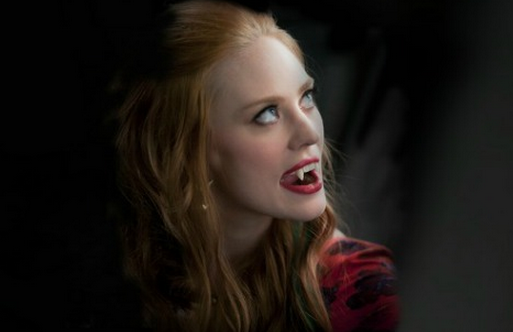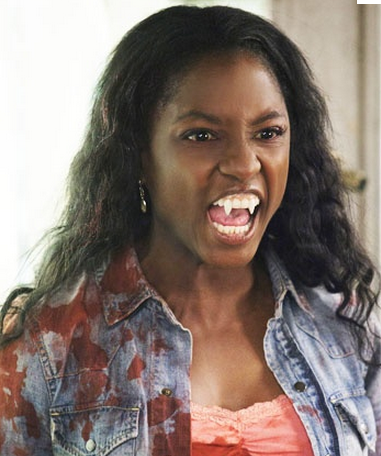True Blood: Religion and Despair (2)
 Monday, July 16, 2012 at 8:12PM
Monday, July 16, 2012 at 8:12PM So what is the Truth? Is it possible that True Blood is an extended meditation on the ambiguity of truth in a world where there are fewer and fewer connections between what people say and what they really mean?

Is this the reason that Sooke Stackhouse can hear people’s thoughts and therefore what they are actually thinking? Doesn’t that put her in an exalted, powerful position? Ironically, the fantasy that people’s thoughts can be heard is the ultimate conceit of the powerless, those who cannot use language and discourse to engage in meaningful conversation and meaningful exchange and those whose actions cannot overcome the challenges they face.
Or how about the True Death, which is the only way that vampires can die? Is truth possible in a world so layered with untruths that there is no correspondence between reality, human actions and the choices people have to make to survive?
What happens to reality when the “facts” no longer meaningfully correspond to the experiences people have, when the facts are manufactured to suit the proclivities?
Truth is that True Blood is about lies and how truth cannot exist in a world where everyone is wearing masks, so that they cannot be seen and where their “true” selves are hidden under layers of magic and false beliefs.
Perhaps there is no true self. Perhaps, the course of a human life has been set not by the force of human subjectivity but by an imagined power that has already written the scenarios humans enact and complete? At least, that is what True Blood suggests and what many human belief systems suggest govern the outcomes of human actions.
Who wrote the laws of nature? In True Blood, gods, sorcerers and magicians wrote the laws, which means that human control has been irrevocably lost to forces beyond its control. This is a governing theme in all the shows. Control has been lost. Reality is a sham. As Tara discovers, even death is not absolute. Her transformation into a vampire is one of the most poignant moments in the series, but also one of the most devastating.

Chance, accidents, capriciousness, these are the enemies of the absolutism that vampires seek in the show. They want order and logic to rule, but discover of course that nature is capricious just as humans are and that their well-laid plans never quite work out. They seek truth, but deceive each other and humans as well. They have a hierarchical political structure that is called The Authority, which governs vampires who do not believe anything they say to each other, thus nullifying the foundations of the authority they seek.
Suspicion, innuendo and false claims, this is a small part of the inventory of characteristics not only of vampires but also of humans. Over the last two weeks, True Blood has been pushing the boundaries between reality and fantasy even further as the war between vampires who believe in co-existence with humans and those who do not believe in any form of interaction, other than using humans for food, plays itself out. But, this is also a war between life and death, between hope and despair. Will the medieval world win out over rationality and logic?
Next week, I will explore the show’s premise that we are living in pre-enlightenment times.
 HBO,
HBO,  Television,
Television,  True Blood in
True Blood in  Culture,
Culture,  Television
Television 

